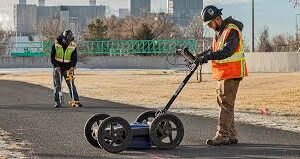Every successful business starts somewhere. Whether it’s a small startup or a local brand trying to reach a wider audience, growth depends on visibility, strategy, and connection with customers. In today’s competitive landscape, digital marketing is the bridge that takes businesses from obscurity to success. With the right tools, tactics, and mindset, you can transform your business into a thriving brand—one that attracts customers, builds loyalty, and stands out online.
In this guide, we’ll explore how digital marketing can help your business grow from zero to hero—and why embracing this evolution is essential for long-term success.
1. Understanding the Power of Digital Marketing
Digital marketing is more than just running ads or posting on social media. It’s a comprehensive approach that integrates multiple online channels to reach your audience effectively. From search engines and email marketing to social media and content creation, every element plays a vital role in building brand awareness.
Unlike traditional marketing, digital marketing allows for precise targeting and measurable results. You can identify who your customers are, understand their preferences, and reach them with messages that resonate. This data-driven approach ensures every effort counts toward your growth.
2. Building a Strong Online Foundation
Before diving into campaigns, your business needs a solid digital foundation. Start with a professional website—it’s the digital face of your brand. Ensure it’s mobile-friendly, visually appealing, and easy to navigate. A well-optimized website not only builds credibility but also drives conversions.
Next, focus on search engine optimization (SEO). SEO helps your website rank higher in search results, making it easier for potential customers to find you. By optimizing content, using relevant keywords, and improving site performance, you set your business up for long-term organic growth.
3. Establishing a Powerful Brand Identity
Your brand identity defines how people perceive your business. It’s not just about logos or colors—it’s the emotion and value you convey. Develop a consistent tone, visual style, and message across all your platforms. Whether you’re writing blog posts, running ads, or sharing updates, your brand voice should remain recognizable and authentic.
A strong brand presence builds trust, and trust converts visitors into loyal customers. Consistency in branding also helps establish credibility, especially when customers compare you with competitors.
4. Leveraging Social Media to Grow Your Reach
Social media platforms are the heart of digital interaction. Whether it’s Instagram, Facebook, LinkedIn, or TikTok, each platform provides a unique way to connect with audiences. The key is choosing the platforms that align with your business goals and target audience.
Regularly posting engaging content—images, videos, stories, and reels—keeps your audience interested. Responding to comments and messages shows authenticity and builds relationships. Social media also helps you gather real-time feedback, refine your strategy, and stay relevant in your niche.
5. Investing in Paid Advertising
While organic marketing takes time, paid advertising offers a faster route to visibility. Platforms like Google Ads, Facebook Ads, and LinkedIn Ads let you target specific audiences based on demographics, interests, and behaviors. By using paid campaigns strategically, you can reach potential customers who are actively searching for your products or services.
The best part? Every click, impression, and conversion is measurable. This data helps refine your campaigns, ensuring your budget is spent efficiently. Over time, combining paid and organic strategies creates a powerful growth engine for your business.
6. Content Marketing: Educate and Inspire
Content marketing remains one of the most effective ways to attract and retain customers. Quality content informs, entertains, and builds authority. Whether through blogs, infographics, videos, or podcasts, valuable content helps your audience solve problems and make informed decisions.
Start by identifying your audience’s pain points. Then create content that addresses their challenges and offers practical solutions. This not only positions your brand as an industry expert but also strengthens customer trust.
7. Harnessing the Power of Email Marketing
Email marketing continues to deliver some of the highest returns on investment in digital marketing. Building a targeted email list allows you to nurture leads, share promotions, and keep your audience updated.
To maximize results, personalize your emails. Segment your audience based on interests or behavior and send content that speaks directly to their needs. Engaging subject lines, concise messaging, and clear calls to action can make a big difference in open and conversion rates.
8. Measuring Success with Analytics
One of the greatest advantages of digital marketing is measurability. With analytics tools, you can track website visits, user engagement, conversion rates, and ad performance. These insights reveal what’s working—and what isn’t—allowing you to adjust your strategy for better results.
Focus on key performance indicators (KPIs) such as traffic growth, click-through rates, cost per lead, and return on investment (ROI). Over time, continuous improvement based on data ensures your marketing efforts remain effective and aligned with your goals.
9. Building Customer Relationships and Retention
Acquiring new customers is important, but retaining existing ones is equally crucial. Digital marketing enables consistent engagement through newsletters, loyalty programs, and social media interactions. Listening to customer feedback and addressing concerns promptly fosters satisfaction and trust.
Happy customers become your biggest advocates—they recommend your brand, write reviews, and help expand your reach organically. A loyal customer base not only boosts revenue but also strengthens your brand reputation.
10. Preparing for the Future of Digital Marketing
Digital marketing is an ever-evolving field. Technologies like AI, voice search, and augmented reality are shaping the next wave of online marketing. Staying informed and adaptable ensures your business keeps up with these advancements.
Automation, personalization, and data-driven decision-making will define future strategies. Businesses that embrace innovation and agility will not only survive but thrive in this fast-paced environment.
Conclusion
Growing your business from zero to hero requires vision, strategy, and consistency. Digital marketing offers the tools and opportunities to connect with the right audience, build a strong brand, and drive measurable success. Whether it’s through SEO, social media, content, or email marketing, each step you take strengthens your online presence.
For businesses aiming to expand efficiently, partnering with Affordable digital marketing services can make the journey smoother. These experts bring experience, technology, and tailored strategies that maximize your growth potential. The path from zero to hero is within reach—embrace digital marketing, stay adaptable, and watch your business soar to new heights.



